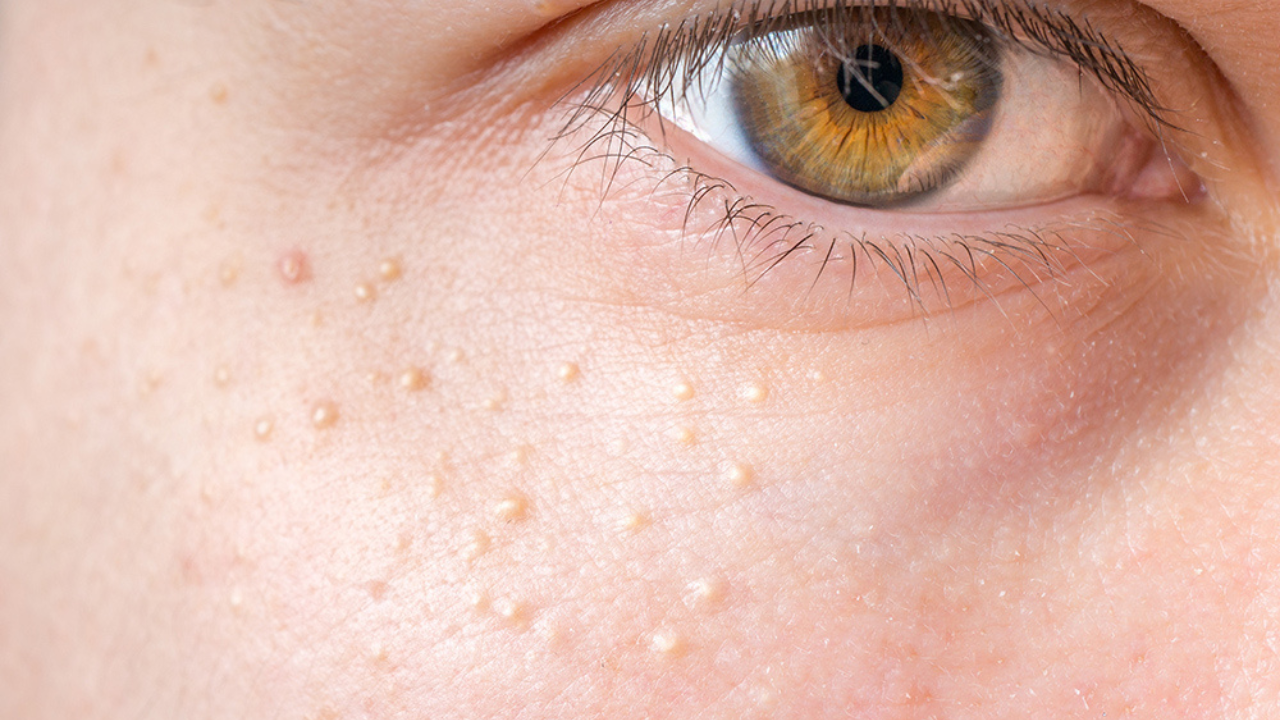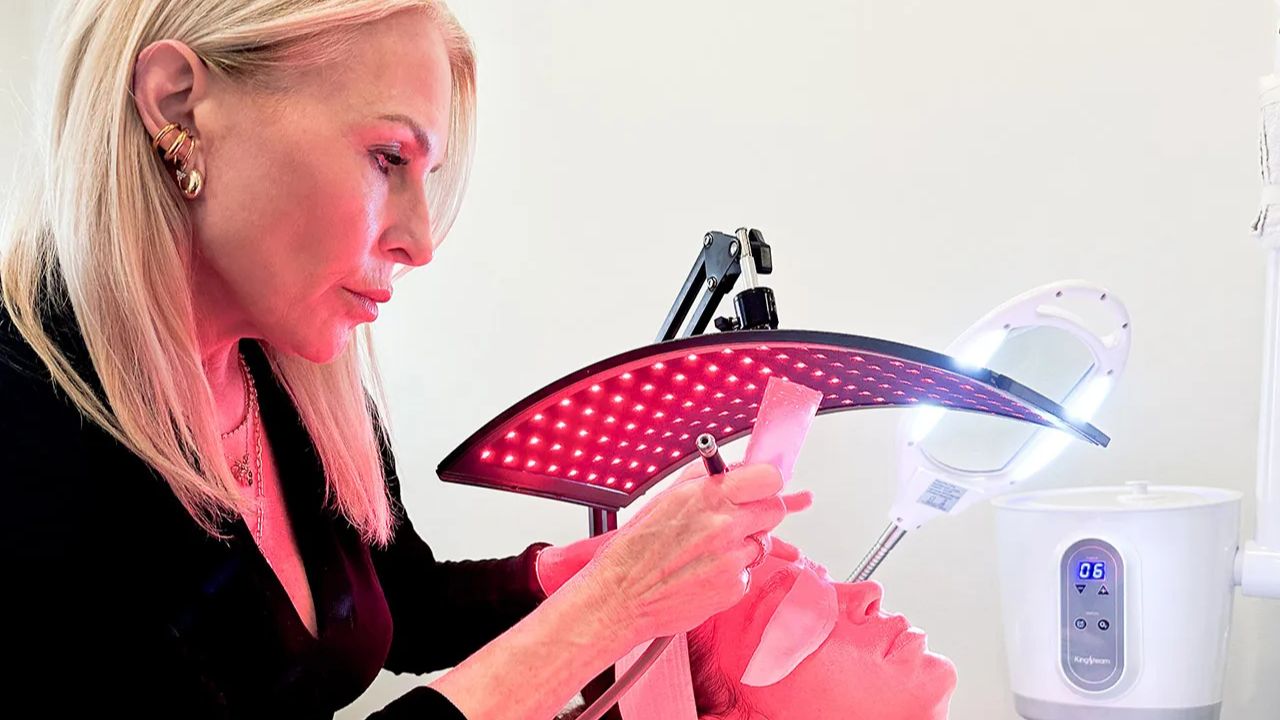Milia Removal are tiny, firm white spots which usually form beneath the skin, usually around the eyes, cheeks, or nose. They develop due to the entrapment of the protein in the skin known as keratin forming these small cyst-like spots. Although not harmful, they are annoying to many individuals as they do not leave with normal skincare.
This is why milia extraction is a trendy search, particularly among the people who want their skin to be smoother and clearer. Here, you will get quality and reliable tips on the causes of milia, safe methods of treatment and the most efficient means of making sure they do not recur.
What Are Milia?
Milia (milium in Latin) are small, hard, and white or yellowish cysts which appear right under the skin. They are created when keratin (a structural protein in skin cells) is trapped and is unable to slough off correctly.
There are two types, namely primary milia, which are present in normal skin, and secondary milia, which appear after a trauma, burns, rashes, or other skin damage.

Milia removal is commonest on the face, particularly around the eyes, cheeks, nose and forehead, although they may also be present on other parts of the body. They can occur in children of all ages: newborns usually possess milia (in approximately 4050 percent of healthy newborns), and adults (both men and women) may also develop milia.
Causes & Risk Factors
Milia removal develops when a natural protein in the skin cells, Keratin becomes trapped under the skin surface rather than being shed off. The risk is increased by a number of factors: sun damage (UV exposure thickens skin and exfoliation is poor), heavy, oil based or occlusive skincare or makeup use, skin injury or trauma (burns, rash, procedures) and chronic corticosteroid use.
The lifestyle or skincare practices that can lead to an increment in risk are infrequent exfoliation, not using non-comedogenic products, not taking care of skin treatments and neglecting protection against sun.
Why Professional Milia Removal is Recommended
Attempting to do it at home may be associated with severe consequences: infection (due to the use of non-sterile equipment or dirty hands), scarring, further driving the keratin into the skin, or inflammation and pigment alteration.
A dermatologist or a trained aesthetic practitioner has a number of advantages: they can adequately diagnose the presence of a bump with milia or otherwise, operate with sterile instruments, select the appropriate way of removal (manual extraction, laser, etc.), and reduce trauma.
Hygiene and safety are required. All instruments are sterilized by professionals, the environment is clean, and patients are provided with clear instructions on the aftercare to prevent such complications as infection, discoloration, or permanent scarring.
Professional Milia Removal Methods
Manual extraction with sterile tools
With a sterilized needle or blade, a very careful opening of the milia sac followed by the removal of the contents. Advantages include that it is fast, accurate and provides instant results. Disadvantages are a certain amount of irritation, redness and the necessity to use proper technique to prevent scarring. The recovery is slight- usually a few hours or a day of mild redness. The price may vary between US $50-200 per session depending on quantity and location.

Electrocautery / Laser therapy
Electrocautery involves the use of heat (electric probe) to tear open and destroy the cyst; lasers (such as CO 2 or erbium) are used to cut through the skin barrier and attack keratin. Advantages are that it is effective on stubborn or deep milia, fewer sessions are sometimes required, and it is also better on delicate areas. Disadvantages are increased cost, a little more down time (redness, may cause mild swelling), and may be more dangerous when used improperly. Recovery may take 1-3 days. Prices usually range between US $150-400+ per session based on the clinic.
Cryotherapy
nitrogen freezing. The frozen milia then peels off in days. Advantages: fast, rather easy. Cons: may lead to temporary colouring of the skin, blistering or tenderness of sensitive skin. Time to recover is not so serious- a few days of treatment. Cost is in the low-mid range (just like manual extraction or a little higher).
What to Expect During and After Treatment
In a professional milia removal procedure, the practitioner will examine your skin first and discuss the procedure. The milia is removed safely with sterile tools or devices by cleansing the area, occasionally with a topical numbing cream applied. The majority experience very little pain such as a small pinch and there is minimal or no downtime. It may cause temporary redness, mild swelling or small scabs but these will heal in a few days.
Mild cleansing by using a gentle face wash is advised after treatment and the skin should not have makeup added until it heals. Sun protection is necessary to avoid irritation or discoloration and it is therefore recommended to apply sunscreen on a daily basis. Close follow-up aftercare is recommended to guarantee a painless recovery and minimize the risk of scarring or relapse.
Read Also: Check Out They Call Him OG Released Date, Cast, Budget and More
At-Home Remedies: What Works and What Doesn’t
Milia may be softened with gentle chemical exfoliation with AHAs (such as glycolic or lactic acid) or BHAs (salicylic acid) and removed over weeks. When used as prescribed by a dermatologist, retinoid creams (e.g. tretinoin) can be used to normalize the skin turnover and prevent recurrences.
It is unsafe, however, to attempt to extract milia with your own fingers–needles, pinching, or squeezing. It exposes it to infection, scarring, and greater depth of the material.
Home treatments would be applicable in cases of mild and superficial bumps. However, when milia take several weeks to clear or appear in sensitive parts (around the eyes), then it is time to consult a specialist.
Final Word
Milia removal can be benign, yet it is important to remove it safely to prevent infection, scarring, or recurrence. Although mild home-based care can be effective, professional care guarantees accurate, clean and efficient outcomes. See a dermatologist or a qualified aesthetic practitioner to deal with recalcitrant or sensitive bumps. To achieve long-term outcomes and appropriate instructions, schedule an appointment with a reliable clinic or get to know about safer milia removal methods nowadays.
Read More: Nicole Kidman and Keith Urban – End of 19 Years of Marriage








